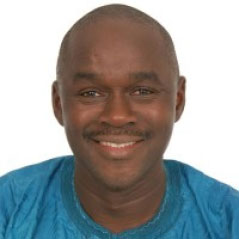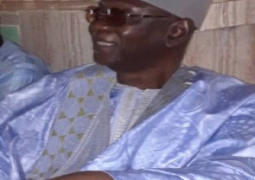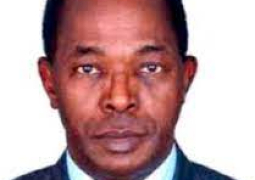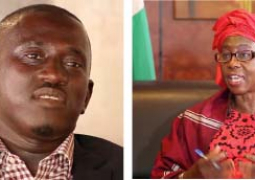
A few years ago, I went to visit my sister in Wellingara, a melting pot of ethnicities and nationalities (especially West Africans) in the western part of The Gambia. So I wasn’t surprised when she told me: “Let’s visit our neighbors, who are Tilibonka. They are very nice people.” But she was shocked at my reply to her suggestion. I said to her, it was a wonderful idea for us to visit them, and added: “I hope they also call you Tilibonka.” And she replied, in shock, “Who, me?” And I said: “Yes, you!”
Now, a bit of context here. I come from the Wollof ethnic group; more specifically the rural Wollofs of Saloum (in the north bank of the Central River Region [CRR] of The Gambia). An alternative name for such Wollofs is “Fana Fana,” a term whose formerly derisory country boy connotation is now worn out.
Many Fana Fanas would never consider themselves Tilibonka who they see as people from Mali or Manding-language speaking people. Furthermore, lack of exposure in the past lent many Fana Fanas to think they were superior to other ethnic groups. I remember going home for holidays in 1969 from Armitage High School, a boarding school, and telling my relatives that we had a kid whose last name was “Tunkara.” “Tunkara!,” they shouted. “How can one have such a last name?”
So my sister, naturally, was shocked when I said to her that I hope they call her Tilibonka. I explained to her that Tilibonka means someone from the east in the Mandinka language, which I learned at Armitage. I told her if you are someone from Ballanghar (our village) and in Wellingara to the west, then you are a Tilibonka! Furthermore, I explained to her, our last name, Touray (spelt variously as Toure, Ture, or Turay), originated from Mali, where our patriarchs came from. Hence another reason why she should be called a Tilibonka!
My exchange with my sister was yet another example of my experience as someone who has been able to cross ethnic divisions in The Gambia. For one thing, it was after I learned Mandinka that I realized that, interestingly, many Fana Fana Wollof words are in fact Mandinka words.
Jimbang (the roof over a verandah) means the same in Mandinka and Wollof, as does pura (a pigeon), benteng (a raised platform made with logs from trees and shrubs), malo (from mano, Mandinka for rice). Bulu felleh is a wedding ritual, and is a corruption of bulo felleh (Mandinka for “here’s my hand” as in when a bride is showing her hand at cooking!
In addition, the Fana Fanas also uses names such as Kebba (an old person in Mandinka) and Koto (Mandinka for someone older than you) that have Mandinka origins. They also use tiga feh, and sa-nyo/sunna feh, both from Mandinka and, respectively, meaning farms whose last crops were groundnuts (peanuts), and late/early millet.
In the vegetable market, middlemen (and women) who buy produce from farmers and sell them on to vegetable retailers are called njenda jai. The name is especially interesting because it came to be when Mandinkas prefaced the Wollof verb, jenda (to buy), with an “N,” and combined it with another Wollof verb, jai (to sell), to produce a pronoun from two Wollof verbs. Njenda jai is now used by practically all languages in The Gambia.
The cross-cultural fertilization of language continues in urban areas in The Gambia. For example, urban Gambian Mandinka is full of Wollof words. A few years ago, I heard a crowd in Sukuta chanting that one of their football (soccer) players was their yaakaroh (from yaakarr, the Wollof word for hope). Similarly, a lady once told me that her colleague had a hehwo (from hehw, the Wollof word for social event). A few days ago, I heard someone speaking Mandinka telling another to nyoulouk (Wollof for starting brewing or cooking) their green tea.
Interestingly, too, urban Gambians are very versatile in mixing Wollof and Mandinka. For example, two ladies I shared a taxi with some years ago chatted in Wollof and Mandinka, switching languages without missing a beat. One would say something in Wollof, the other would respond in Wollof, and they would go like that until one of them switches to Mandinka, and they both would speak in Mandinka for a while … and back to Wollof! I told them I found their conversation fascinating because of the way they switched languages, and added that that’s the way Gambians should be. In gratitude, I paid their fare for them!
Many Gambians are multilingual because of their mixed ethnicity. In my case, I have Tukulor ancestry on both my maternal and paternal sides, so people with Khan, Kah, and Ann last names are my cousins. In addition, I am related to Sabally’s who are Mandinka’s (although I’ve heard the surname originally is Fula) in Sanjal (Upper Badibu) because my maternal grandfather married from them, and one of his daughters (a sister to my maternal grandmother) was married to her Mandinka relatives there. In addition, I have Jola, Fula, and Mandinka in-laws, as I’m sure many Gambians have in-laws in various ethnic groups.
Despite the mixed nature of Gambian society, efforts have been made as far back as during British colonial rule, to divide us. A 1914 article, on The Gambia called Wollofs the “superior race” compared to other ethnic groups, just as Belgian colonialists created and stoked ethnic conflicts in Rwanda by anointing the Tutsi as superior to the Hutus.
An important tool that can sow divisions among ethnic groups is a national census. As far back as 1931, the British colonial government conducted a population census which reported a total population of 185,150, with Mandinkas, Jolof (Wollof) and Fula, constituting the three major ethnic groups.
This tradition continued after our Independence in 1965, with the latest, the census of 2013 reporting on the population of the main ethnic groups in The Gambia, their geographic distribution, and growth over the previous decades. But a census of ethnic groups is a complete waste of time and resources at best and, in the extreme, dangerous.
It is a waste to conduct a census of ethnic groups because it has little use from a development planning and implementation perspective. Although some development challenges (e.g. female genital mutilation) are specific to some ethnic groups, they are better addressed by targeting all ethnic groups.
For this reason, our next population and housing census, scheduled for 2023 should not ask people their ethnicity, but the languages they speak. This would be much more useful because government and other development actors (including the private sector) can then design communications strategies to reach as many people as possible in languages they understand.
A national audience survey I conducted (with support from the Gambia Bureau of Statistics) for GRTS in 2003 showed that although 34.9% of GRTS radio listeners were Mandinka, 76.1% of them spoke Mandinka. Clearly, you can reach more people by focusing on the languages they speak, instead of their ethnicity.
It can be dangerous to be fixated on absolute numbers of various ethnicities. In Nigeria, for example, population censuses have been weaponized because census results determine representation in legislative bodies and revenue allocation. As a result, the last time Nigeria had a census everyone was happy with was back in 1953; some 68 years ago! Rwanda, which suffered a terrible genocide in which an estimated 800 thousand Tutsis were killed in 100 days, stopped identifying ethnicity in national ID cards in 1995, and banned ethnicity in 2004.
The Gambia might not be Nigeria or Rwanda, but an obsession with the numeric strength of various ethnic groups in our country can help increase the sense of entitlement amongst our unruly and inconsiderate citizenry. Furthermore, Gambian politicians can and have weaponized ethnicity to advance their own interests.
In light of the presidential elections to be held in December 2021, Gambians should realize that we are all of the same kin. As such, it is the duty of each of us to say an emphatic “No!” to anyone who wants to sow seeds of discord between various ethnic groups in the country. We are one. We’ve always been, and will always be.
Katim Seringe Touray, Ph.D., is a soil scientist and an international development consultant, and can be reached at katimstouray@yahoo.com Please visit the online version of the article on Medium (https://kstouray.medium.com) to access the links to sources of information in the article, and other articles by him.




